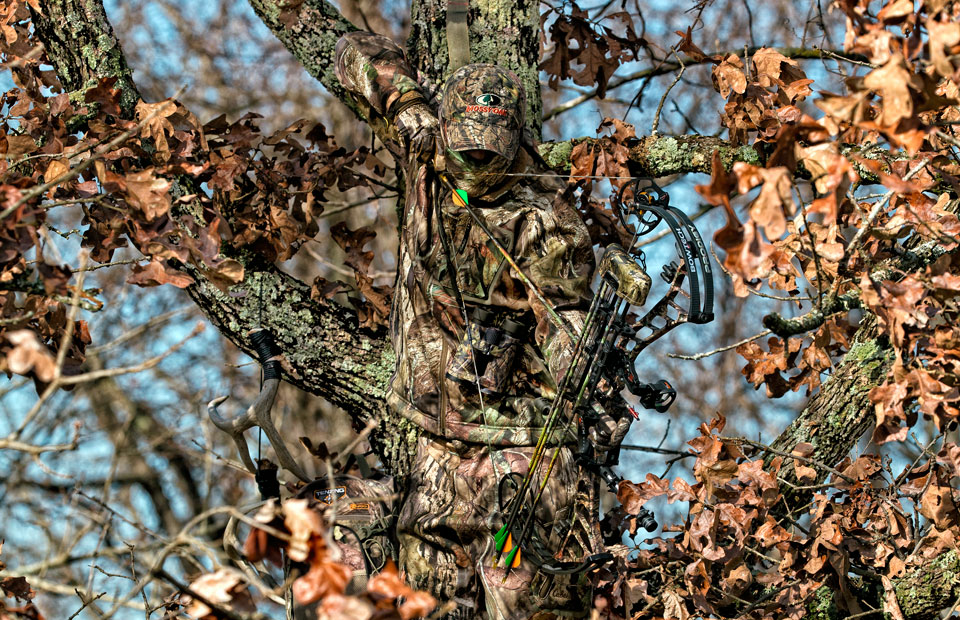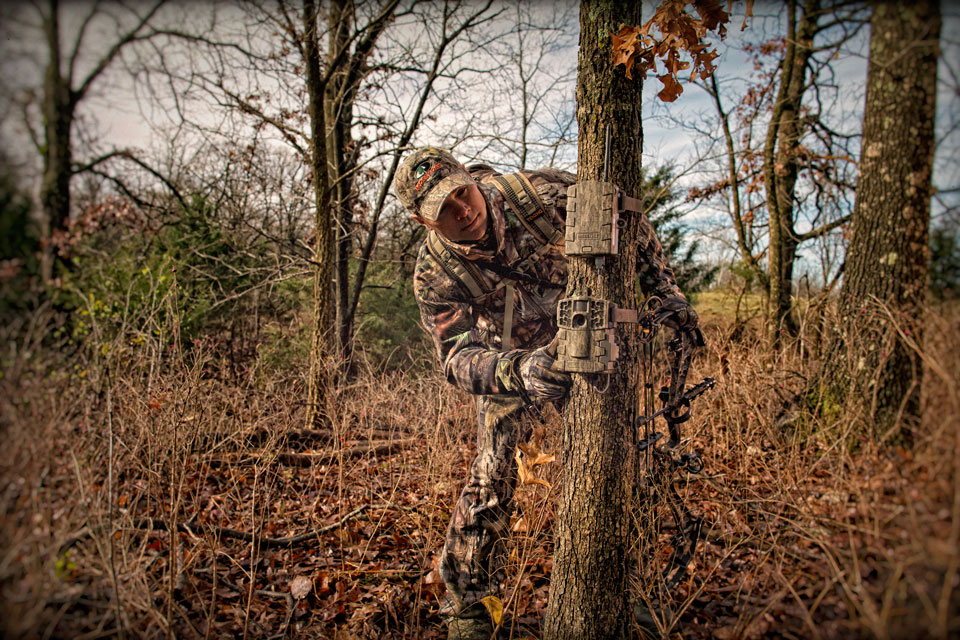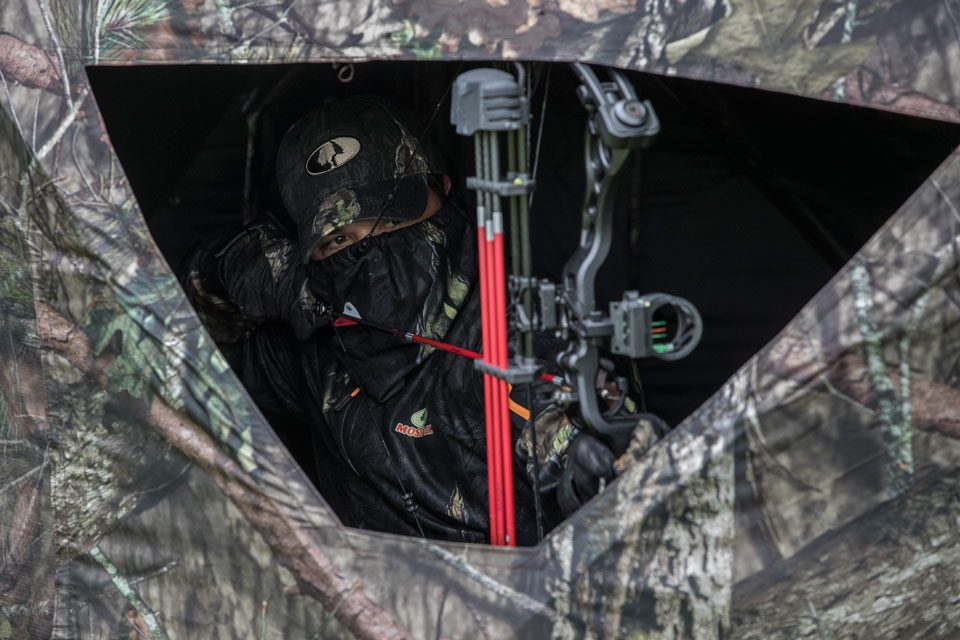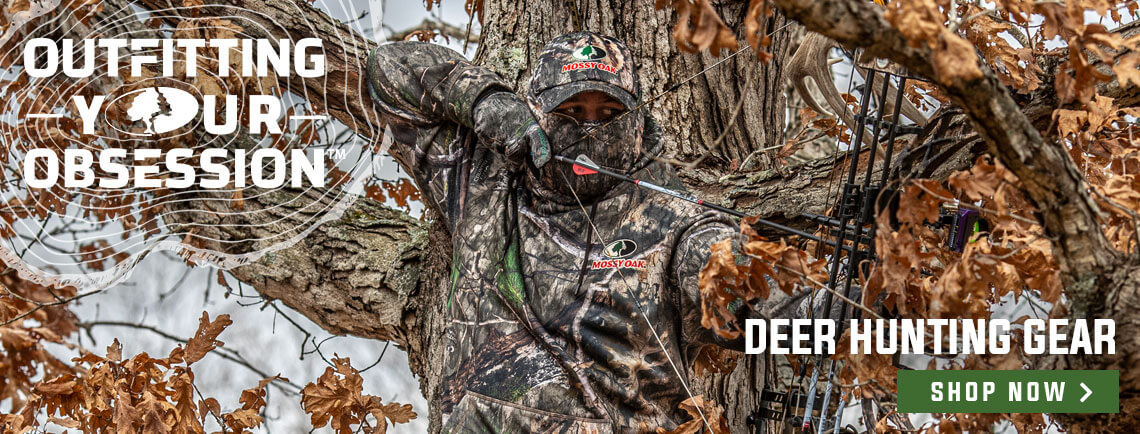With the shorter ranges involved, bow hunting is a much more intimate experience than hunting with a gun. It also demands more from the hunter in terms of skill, patience and perseverance. Unlike hunting with a gun, success during archery season depends on your ability to capitalize on an opportunity to close the distance and take a well-placed shot. Developing your whitetail bowhunting strategies before you’re staring at a deer is the best way to be successful.

How you approach whitetail bow hunting depends on when in the season you plan to harvest your deer. Depending on the state where you hunt, your archery season may be in the early fall, late fall or both. Whether you hunt early in the season or later, these bowhunting tactics for beginners can help you bag that trophy buck of your dreams.
Prepping Before the Hunt
Your success in the tree stand hinges on what you do before deer season starts. For instance, having the right tools at your disposal can often be the difference between bagging the buck of your dreams and coming home empty-handed. Be sure to check out our selection of essential bow hunting gear, like arrows, to make sure that you’re using the best broadheads for deer. Our arrows are constantly tested to make sure that they’re meeting the needs of deer hunters, regardless of when and where they hunt.
Practice Makes Perfect
Practicing your draw and release during the offseason is the best way to make sure you’re ready when the opportunity to bring down a buck presents itself. You can grab a practice target that allows you to focus on the best shot placement for whitetail deer. When you build muscle memory and spend time focusing on the perfect kill spot, you can approach hunting season with more confidence.
In addition to dialing in your shot placement on whitetail deer, spending some time practicing with a target also allows you to dial in your bow draw weight for deer hunting. Try to get outside to fire some practice shots in different conditions. Doing this gives you a chance to get used to wind direction and thermals.
Early Season Deer Hunting Tips
Early archery season for deer is widely considered the best time for bow hunting deer. This is especially true of bow hunting opening day, when deer are not yet too fearful of the sight of humans out in the wild. Deer are also more active in their search for food during the early season, making them easier to ambush as they travel from their afternoon grazing areas to reach their evening meal.
You’ll want to be in your stand early as deer often start looking for food shortly before sunrise. The best time of day to bow hunt, especially in the early season, is early morning. Deer will usually get back to the place where they bed down around dusk, so you’re far less likely to see movement if you get a late start.
Much of the hunting during the early season revolves around three key concepts: keeping pressure minimal, formulating a hunting plan before the season starts and targeting well-trafficked areas.
1. Don’t Pressure the Deer
With the need to get up close and personal with deer when bow hunting, it’s essential not to spook them early in the season, which might cause them to run. Make sure that you’re using the right scent control strategies to keep the deer from sniffing you out. Until you are an experienced bowhunter, it’s best to practice low-pressure hunting techniques, such as relying more heavily on game cameras to get information about their movements and using unscented or naturally scented gear. Researching scent control techniques can help you avoid being detected by the deer passing by your stand.
While it might be tempting to spend more time in the wild scouting for deer, checking trail cameras and hanging stands as opening day approaches, try to resist the urge to go out too often. Other hunters might do this on their hunting spots, but if you spend less time scouting before opening day, deer should move to your spot as they are pressured out of other hunters’ areas. One of the best bowhunting practices is to stay out of the area you plan to hunt as much as possible.
It is best to hunt in the evening. Warm weather feeding patterns often keep deer in or near food sources from the evening until early morning. Unsuspecting crossbow hunters are busted by a field full of deer as they make their early morning walk to the stand. You can avoid this by sleeping in and hunting in the evening. This way, you are not blowing deer out or educating deer about your stand location.
2. Plan in Advance
The closer it gets to opening day of archery season, the less often you should be on the property. Make sure your tree stand is set up for you and your draw length. Well ahead of opening day, make sure you can draw without obstruction. Many beginners find that pulling back on an actual buck is much harder than pulling back on the target in the backyard, so adjust your draw weight accordingly.
If your compound bow is hard to draw in the backyard, you will really struggle to pull back when a buck walks out. Try to set yourself up so you have a solid hunting strategy a week or two before opening day and then leave it alone.
By planning your strategy well in advance of other hunters, you set yourself up to enjoy a stellar archery season. As they start to increase activity in their areas, yours should be decreasing, causing deer to migrate to your property as a haven from the activity elsewhere.
Another way to decrease hunting pressure is to plan a good entry and exit to your tree stand. Quiet entry for bowhunters who are approaching their tree stand is crucial. Something as simple as a branch bumping the stabilizer of a compound bow when walking to the stand can make a lot of noise. It’s best if your trail zigs and zags a bit. Otherwise, a deer can stand at one end of the trail and see the other end.
3. Target Bedding-to-Feeding Routes
Before rutting season, the number one priority of the game animals is enjoying the feast of acorns, nuts, fruits and plants and bulking up as the leaner seasons approach. Deer look for food with high sugar content, so fruits, nuts and acorns usually take the top spots if they have a choice between different food sources.

As opening day approaches, look for areas where the deer’s preferred food types are abundant. Set up cameras in the area and identify where they might head to for bedding if they decide to feed in the area. As you ease back on the pressure, the deer that settle into your hunting spot should start to follow more predictable patterns, allowing you to mark off key transit routes they take to go from bed to food.
Deer are creatures of habit, and they like to sleep and eat in the same areas. Spend some time in your hunting area looking for signs of bedding and food sources for early season deer. Understanding whitetail movement patterns allows you to better determine where you want to place your stand.
4. Rut Hunting Tactics
Bow hunting game animals during the rut isn’t something bow hunters typically look forward to. With gun hunters pressuring deer, the chances of actually bagging a buck are quite low. However, dedicated bow rut hunters know there are few things more rewarding than being able to score a kill despite all the gun hunting activity going on in an area. It also takes an incredible amount of skill to hunt down deer wary of all the human activity, so scoring a kill during this period of the hunting season is an incredibly self-affirming event.
Hunting the rut is difficult and can take some time to master. These two rut hunting tips can put you on the path to mastery.
5. Stalk the Does
While killing a buck is the highlight of hunting the rut, the real stars of the season are the does — maybe not to most hunters, but certainly to the bucks. It’s the only thing on their minds, and anywhere you find does, a buck is almost guaranteed to be nearby.
Of course, hunting a doe is no easy feat. Does are especially wary during the rut since they have to contend with both hunters and bucks on the chase, so knowledge of the land and a good instinct of where they might be is crucial. It is rare to see a lone doe when you are bow hunting. They tend to travel together. Wary does are constantly on the watch for bucks and hunters during the rut. You almost always have more than one set of eyes to avoid.
If you also hunted the early season, then you might have more luck finding does than if you’re only hunting the rut. The early season allows you to scout out spots where does congregate or open areas where they have to cross with a buck on their tail. Set up a stand there, stay well-concealed and watch for bucks giving chase.
6. Use Your Ears
Rutting season is a noisy time, with buck grunts, fights, chases and wheezes ringing through the air. With so much information drifting in from all around, listening for cues can help you locate a buck searching for females, chasing them down or competing against territorial rivals.
With sound to help you paint a picture of the environment, you can use your knowledge to plan how you want to approach the hunt. The first and most obvious approach is to stalk the buck, which is difficult, tiring and time-consuming. However, it is also much more fulfilling and exciting than taking a deer by spending many hours sitting in a tree and waiting.
If you’re not the stalking type, however, arriving in the morning and using that time to listen for calls is an excellent way to help you find good places to set up for an afternoon or evening sit. Listen for spots with buck activity and make a note of them. With enough luck, some of those spots won’t be pressured by other hunters, and you can come back to them in the afternoon to score your kill.
Hunting the Late Archery Season
Late-season bowhunting demands more of the hunter than any other period. The colder weather makes the hunt far less comfortable; deer are warier of humans; and more involved techniques are typically required to have any chance at success.
Intimate knowledge of deer behavior and mastering the art of going unnoticed are prerequisites if you want to be a successful late-season hunter.

7. Hunt the Food
Food becomes much scarcer in the wild when the cold weather starts to roll in as fields of grass wither in the cold or disappear under blankets of snow. With less food and freezing temperatures, deer are less likely to wander outside of a small, safe core zone with a lot of food and enough cover to conceal a bedding area.
Tree stand placement for bowhunting largely revolves around where the deer go to eat. Pay attention to their habits, and plan accordingly. With snow on the ground, paths also become more visible.
When setting yourself up for a winter hunt, look for rich sources of wintering food. Fields with cover crops, standing crops and other easily accessible sources of nutrition attract deer from miles around. Find a bed-to-food path and start your patterning there to find the best place to set up an ambush.
Master the Art of Stealth
Deer are notoriously easy to spook during the late season of bow hunting. This is due to two factors: Deer stick to a more regular pattern, making it easier for them to spot things that might be out of the ordinary, and they are in a pressured state from enduring the flurry of hunting during the rut.
To counter this, hunters need to be especially careful during late-season hunts. Low-pressure scouting can keep deer from abandoning the area in search of safer territory, so trail cameras are especially useful during this period of the hunting season. Set the cams up conservatively, using information from previous sightings to plan excursions deeper into the deer’s core area. With enough information about your quarry, you can start staking out a potential ambush point during a couple of afternoon sits.
With the shorter range of a crossbow, you may need to take the deer closer to its bedding or feeding areas. To keep from getting busted by your target, wear scent-free clothing, plan your camouflage well and deploy a ground blind to allow you to get as close as possible to the deer.
Bag That Buck!
Regardless of when you choose to go archery hunting for deer, bow hunting whitetail requires hunters to step up their game if they want to score a kill. This beginner’s guide will help you overcome the many challenges of bow hunting. Challenges such as scouting without pressuring deer, knowing what food sources deer hit throughout the season and concealment after the leaves fall are all part of the fun of bow hunting. Keeping the bow hunting tips above in mind on your next hunt should help you improve your chances of bagging your sought-after buck.































